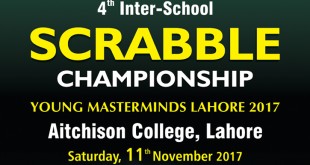The Basant prohibition has been explained officially in terms of foul play by kite flyers who use metallic wire or coat their twine with such preparations that it becomes fatal for the people in the streets who happen to get it on their throats. But the real reason is the clerics’ hatred of the festivity.
The Basant prohibition has been explained officially in terms of foul play by kite flyers who use metallic wire or coat their twine with such preparations that it becomes fatal for the people in the streets who happen to get it on their throats.
But the real reason is the clerics’ hatred of the festivity. They campaigned against it calling it a Hindu festival and a pagan ritual. The Muslims, they insisted, must be barred from it. It was on account of this campaign that the prohibition was proclaimed.
Some of the Indian festivals have cultural significance, in addition to a religious significance (which can vary depend on the specific tradition), and are thus often celebrated by non-Hindus also in some form. These include Holi and Diwali in addition to Basant.
Amir Khusro (1253-1325) has composed songs using the word Basant (festival), and Nizamuddin Auliya used to join him in celebrating Basants of sufis.
The Hindu Basant Panchumi involves certain acts of worship. For the Muslims the Basant festival was started by Nizamuddin Auliya. Amir Khusrau, the story goes, was on his way to visit his spiritual mentor when he noticed mustard fields in full blossom. He also saw a lot of people wearing the colour: women in yellow saris, men in yellow turbans.
The scene inspired the poet in him. He plucked a branch carrying several mustard flowers and placed it in his turban. He also came up with a verse invoking the spring showers to demand flowers and wine.
Aaj basant manaalay, suhaagan,
Aaj basant manaalay
Anjan manjan kar piya mori, lambay neher lagaalay
Tu kya sovay neend ki maasi,
So jaagay teray bhaag, suhaagun,
Aaj basant manaalay.
Oonchi naar kay oonchay chitvan,
Ayso diyo hai banaaye
Shah Amir tuhay dekhan ko,
nainon say naina milaaye,
Suhaagun, aaj basant manaalay.
Translation:
Celebrate basant today,
O bride, Celebrate Basant today
Apply kajal to your eyes, and decorate your long hair
Oh why are you the servant of sleep?
Even your fate is wide awake,
Celebrate Basant today,
O high lady with high looks,
That is how you were made,
When the king looks at you, your eyes meet his eyes,
O Bride, Celebrate Basant today.
Nizamuddin, for his part, had for months looked dejected following the death of his favourite nephew. He had stopped listening to music and had not been seen smiling in a while. The verse brought a smile to his face. Noticing the flowers Khusrau was carrying in his turban, he demanded an explanation. Told that the people were celebrating the advent of spring, he instructed his followers to do likewise. The little hint from Sultan Ji opened the doors for Delhi’s Muslims.
So, the authorities’ view of the festival is at a variance with our cultural history. Our sufi saints considered Basant permissible fun but our clerics and officials today see it as un-Islamic. How callous do they have to be to refuse to tolerate people enjoying themselves; to try and douse all occasions of joy?
Kite flying is the major and most colourful event of this festival. The sky is covered with different colourful kites. Sweet yellow rice is prepared specially for this occasion. ‘Yellow’ is the colour of the festival and so it dominates everywhere, i.e. in the kites, in the clothes, especially in the clothes of ladies, as ladies make a lot of preparation for this particular occasion. People use searchlights in the night to fly the kites. All the family members gather at one single place, mostly on the rooftops, and celebrate this festival.
A fighter kite which is invented in India and Pakistan is called a ‘Patang’ or ‘Guda’. These kites were made of tissue paper and two sticks of bamboo and most recently now kites were made of plastic wrap or Mylar (non-sticky plastic). The kites fly by line or thread. The line is called ‘Manjha’ a glass-coated thread and each flier attempts to cut every other kite out of the sky. They always make competition with each other. The last kite flying is the winner. Some of the competitions are last standing kite, some competitions are beautiful kites and some competitions are related to biggest kites.
Origin
In Sanskrit Vasanta means spring and Panchami is the fifth day of the fortnight of waxing moon (Shukla Paksha) in the Hindu month of Magh, January–February of English calendar.
In the Vedas the day of Vasanta Panchami is dedicated to goddess Sarasvati. It is not a national holiday in India but the schools are closed and the students participate in decoration and arrangement of the worship place. A few weeks before the celebration, schools become active in organising various annual competitions of music, debate, sports and other activities. Prizes are distributed on the day of Vasanta Panchami. Sarasvati is the goddess of learning. Sarasvati bestows the greatest wealth to humanity, the wealth of knowledge.
The Vedas describe Sarasvati as a water deity, goddess of a river of the same name. According to popular belief, Sarasvati, originating from the Himalayas, flowed southeast, ultimately meeting the Ganges at Prayag, near the confluence of Yamuna. Hence, the place is called Triveni. In due time this course of water petered away.
The mythological history of Sarasvati associates her with the holy rituals performed on the banks of the river Sarasvati. She is worshipped as a goddess of speech, attributed to the formation of Vach (words), invention of Sanskrit language and composition of hymns.
Amanullah Khan Arman’s book Urs aur Melay published by Kitab Manzil Lahore in 1959. contains a chapter on Basant (pp.276-277):
“In pre-partition India Hindus, Muslims and Sikhs celebrated Basant in unison. Basant festivals held in all major cities of Punjab and men wore yellow turbans and women yellow dupattas and saris. Hindu, Muslim and Sikh women together play and traditional seasonal songs were sung that reflected the liveliness and romance of Punjabi life. Kite flying was also common but on a small scale with decency.
After partition the festival too lost its original colours. After departure of non-Muslims Basant was reduced to kite flying and other traditions were gradually forgotten. Now-a-days neither yellow clothes nor swings could be seen or any other civilised activity. Here and there, crowds of kite flyers show their ill manners. Children, grownups and old alike fly kites on rooftops from dawn to dusk. Kite battles and brawls are common scenes.
Most of the kite flyers are less educated or illiterate labourers. Some educated also do the same and the kite flying orgy is spreading among the school children.
This was the narration of Basant in Pakistan till late 1980s Afterwards it was for many years officially backed by the government and sponsored by multinational corporations. Although Basant is celebrated throughout Pakistani Punjab, it is Lahore which made it popular not only in Pakistan but all over the world as the largest kite festival. Over the years, the Basant festival has drawn thousands of travellers to Lahore from all over the world. Even Indian movie stars had started participating in the festival which peaks with an all-night flood-lit kite flying marathon on the eve of the festival.
In 2005, an advocate, M. D. Tahir of the Lahore High Court, contended that many dangers, including the kite strings and power breakdowns, resulted from kite flying. As a result, in 2005, kite flying was banned in Pakistan. Violent protests occurred outside the Supreme Court.
Despite the ban on kite flying one can see hundreds of kites every afternoon and evening on Lahore’s sky and the number of kites is even higher on Sundays and public holidays. Kite flyers compete to cut each other’s kites loose. In the past strings were coated with a slurry of fine glass shards which allowed one flyer to cut another’s kite lose. In small villages the custom of ‘kite running’ allows poorer children to chase down and claim the free flying kites. Sadly, the festival has lost its true colour and instead became a game of death.
 Jahangir's World Times First Comprehensive Magazine for students/teachers of competitive exams and general readers as well.
Jahangir's World Times First Comprehensive Magazine for students/teachers of competitive exams and general readers as well.


